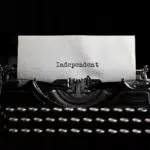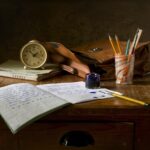Govardhan Puja is on November 15 this year, observed on the fourth day of Diwali. The term means ‘pile of grain,’ and is celebrated in Hindu households to cherish Lord Krishna’s victory against Lord Indra by elevating the Govardhan hill. The heap of grain symbolizes this hill and also aligns with the teachings of Lord Krishna on worshipping nature. The day is also known as Annakut Pooja, and is one of the most important spiritual rituals performed across India.
History of Govardhan Puja
The word Govardhan is taken from the mountain named the same, which was single-handedly elevated by Shri Krishna. ‘Go’ is Hindi for cow and ‘vardhan’ means sustenance. ‘Go’ also means senses and the term ‘vardhan’ also means ‘increase,’ resulting in ‘increasing one’s senses’ by worshipping Krishna. It is believed that those who worship Govardhan hill, increase their belief and devotion towards Shri Krishna.
In Hindu history, this day marks Lord Krishna’s victory against Lord Indra. The significance of the basic elements of human life are also underlined on Govardhan Puja. This day is said to be the ideal time to express love towards mother nature. Devotees carry out Annakut Puja – offering Chappan Bhoga featuring 56 food items to their Lord Krishna.
Hindu mythology also tells the story of how people prayed to Lord Indra to protect and save their harvest. Instead, heavy rainfall resulted in the destruction of these fields. The importance of nature and its effects was preached by Lord Krishna and fought against Lord Indra’s tyranny as he caused stormy rainfall. By lifting the Govardhan hill, Lord Krishna sheltered the people and shielded them from Lord Indra’s wrath.
Another legend linked to Govardhan Puja is of King Bali who Lord Vishnu defeated. King Bali is believed to come out every year from Pataal Lok on the occasion of Govardhan Puja to visit his Kingdom. For this reason, this day is also widely known as ‘Bali Pratipada’ and ‘Padva’ in some parts of India.
Govardhan Puja timeline
1247 dishes were prepared and offered to deities during celebrations at the Swaminarayan Mandir in England.
250 kilograms of food was offered in a temple in Mysore, India.
The Guinness World record held for the largest ever Annakut feast was in BAPS Atladra Mandir located in Gujrat, featuring 3500 vegetarian dishes.
Govardhan Puja celebrations and traditions continue successfully.
Govardhan Puja FAQs
What happens on Govardhan Puja?
Govardhan Puja is a major Hindu festival on which devoted followers of Lord Krishna prepare and offer large heaps of vegetarian food to express their gratitude.
Is Govardhan Puja a bank holiday?
Falling on the fourth day of a week-long celebration of Diwali, Govardhan Puja is a national bank holiday.
What does Govardhan mean?
Derived from the Sanskrit word Govardhan, it means an increase in blessings.
How To Celebrate Govardhan Puja
Build hills
It is a common tradition to celebrate this day by building up heaps of cow-dung into hills. This symbolizes the legend of Govardhan hill and is worshipped.
Perform rituals on cows
Cows are sacred animals in Hinduism. Cleanse and bathe a cow or bull and decorate it with flowers, garlands, and saffron.
Prepare Chappan Bhog
Challenging for sure, but prepare the offering of 56 food items for Lord Krishna. It is rewarding and will reap great spiritual benefits.
5 Facts About Govardhan Puja
Holy Cow!
Govardhan Puja also translates into blessings bestowed by the cow to humans.
Pile it up
Additional to preparing heaps of food, hillocks made of cow dung are also common on this day.
Love mother nature.
Govardhan Puja is also a day for cherishing mother nature and its gifts and bounty to all humans.
It falls on Diwali
Govardhan Puja falls on the fourth day of Diwali celebrations.
Not just a prayer
The day is not strictly religious, with people dancing around cows and hill replicas to celebrate Lord Krishna’s victory.
Why We Love Govardhan Puja
Every holiday tells a story
We love the stories and histories that lead to traditions and celebrations of days like Govardhan Puja. Each tale associated with it is fascinating and worth remembering.
Imparting of these stories
It is common for elders to bond with children and the next generation over these traditions and folklores. Creating bonds through culture and tradition is ultimately what keeps these holidays alive and going.
The gift that keeps giving
Govardhan Puja circulates blessings for everyone. Whether it is the people who are making the offerings or the less fortunate who are benefiting from the prepared food and its distribution, the gift of giving keeps going.
Govardhan Puja dates
| Year | Date | Day |
|---|---|---|
| 2025 | November 15 | Saturday |
| 2026 | November 15 | Sunday |
| 2027 | November 15 | Monday |
| 2028 | November 15 | Wednesday |
| 2029 | November 15 | Thursday |




















